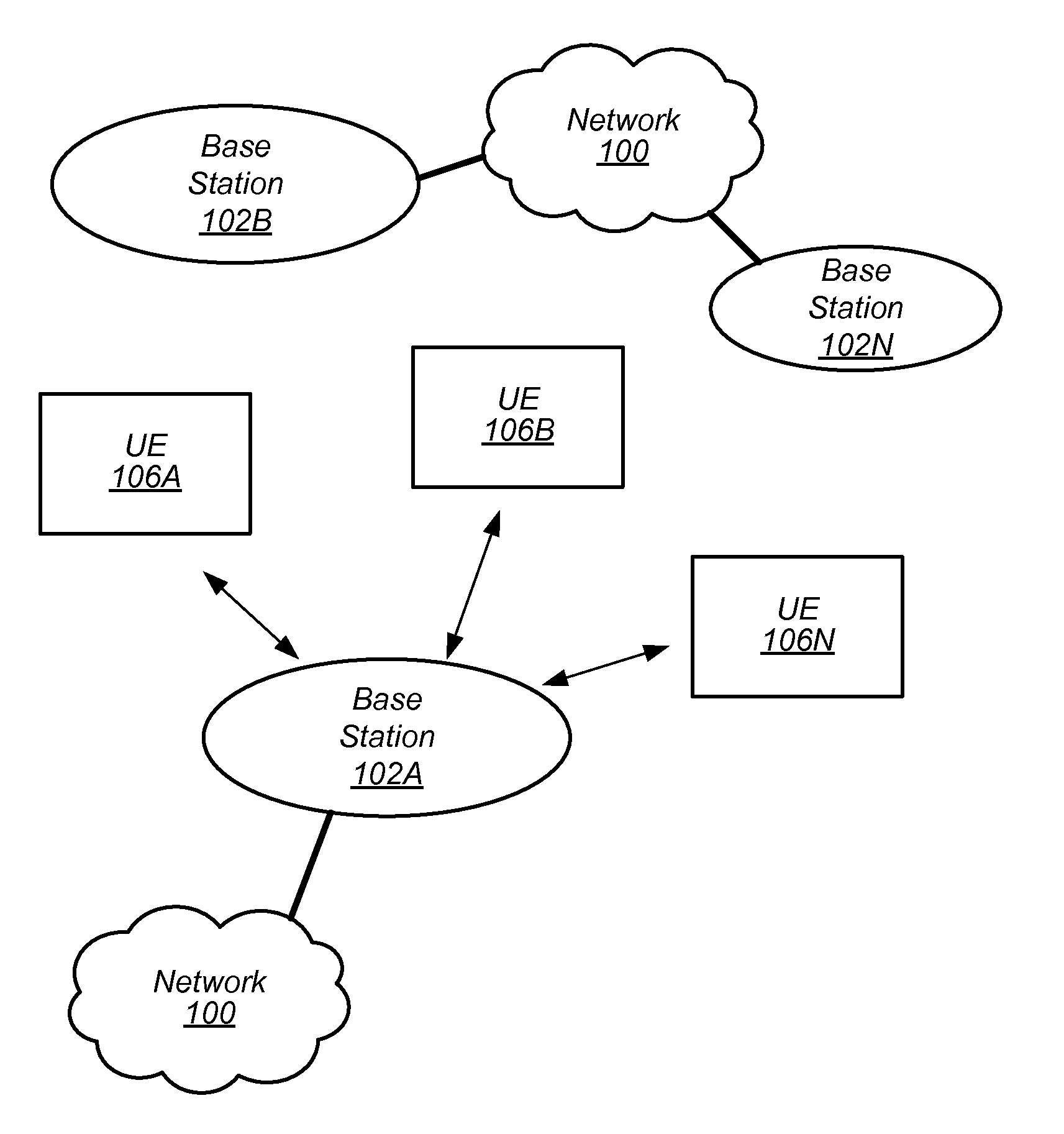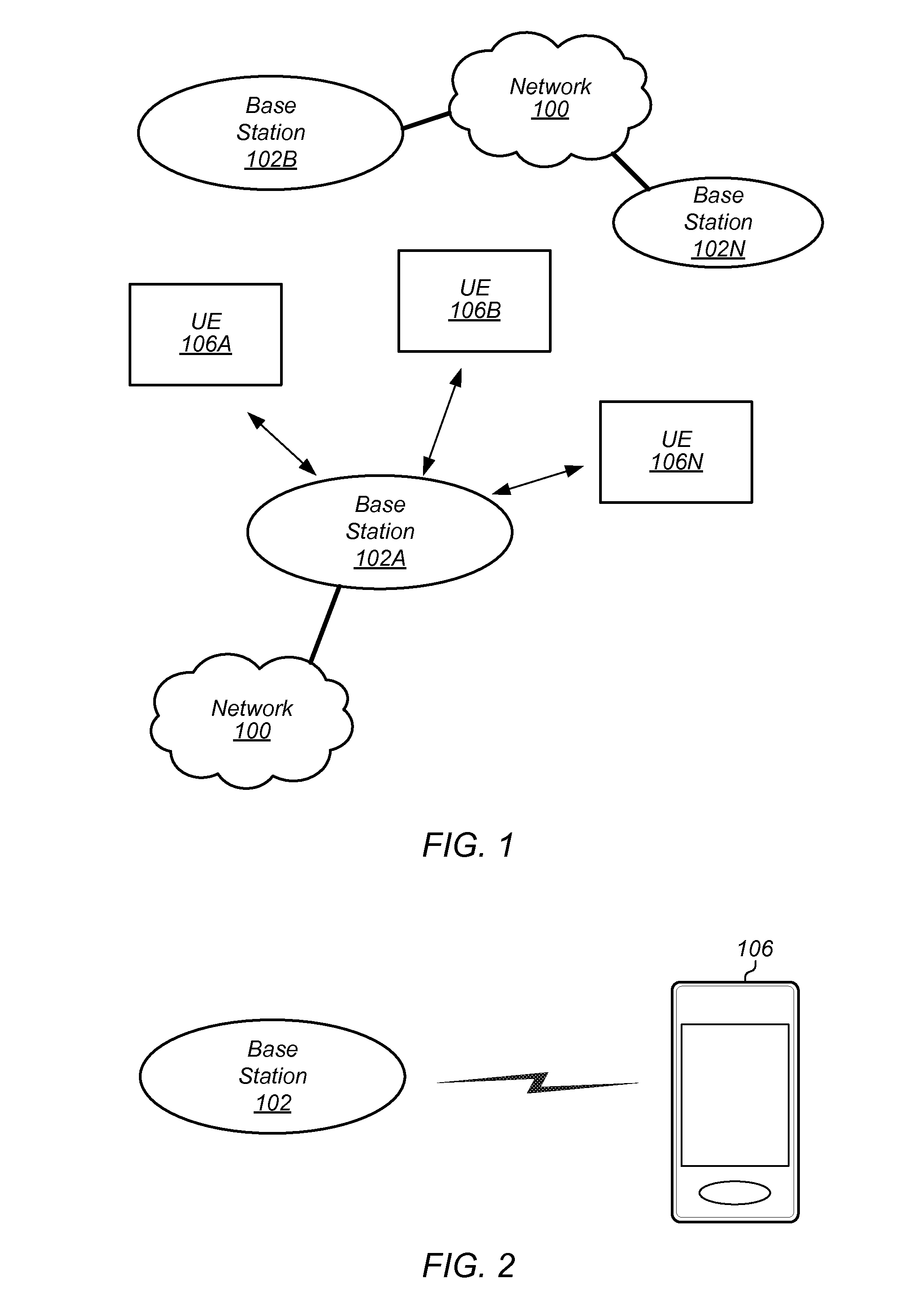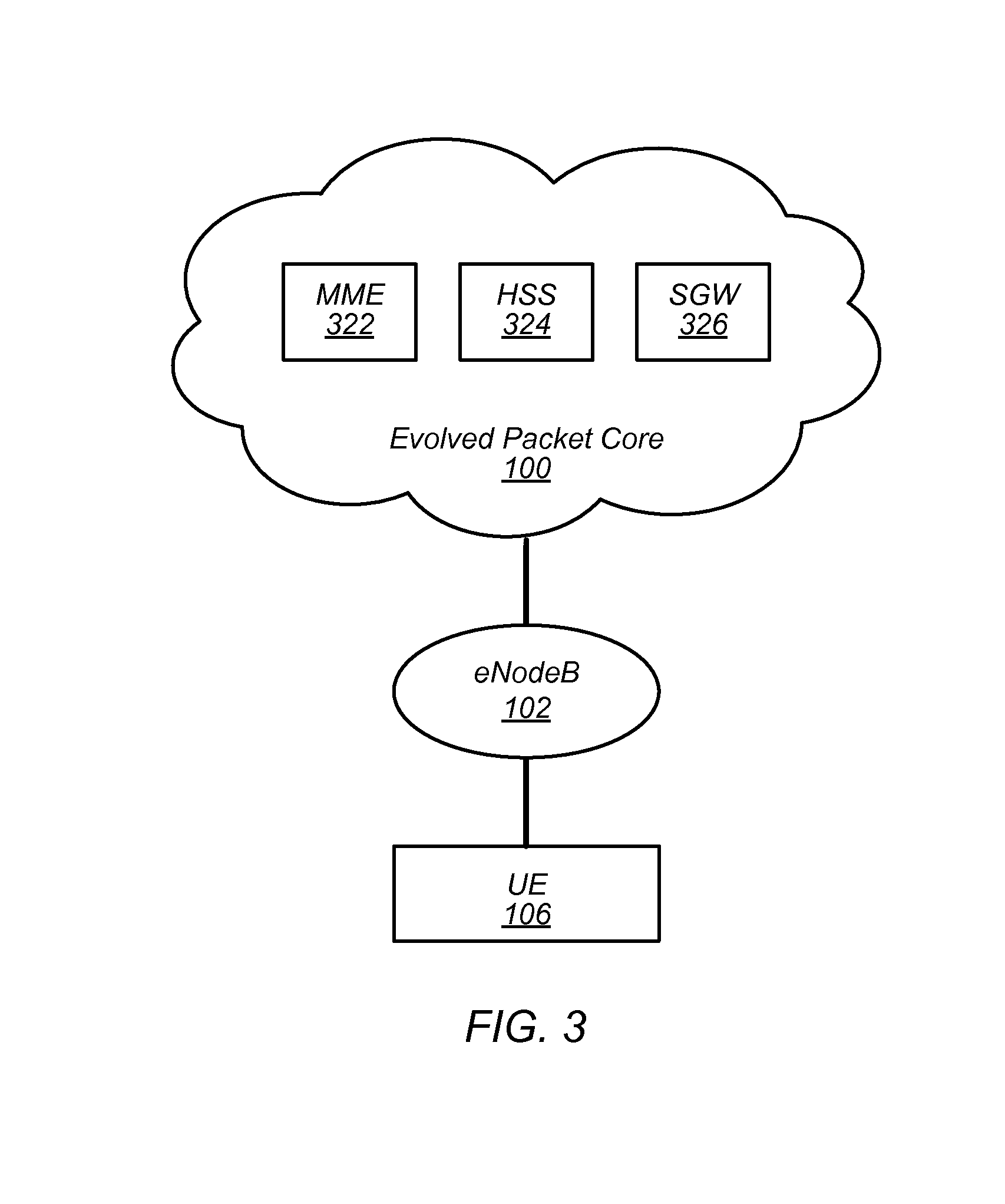Network Synchronization for System Configuration Exchanges
a network synchronization and configuration exchange technology, applied in the field of wireless devices, can solve the problems of cellular communication applications in danger of operating inefficiently, not suiting all possible applications and devices, and cellular communication techniques, and achieve the effect of improving synchronization
- Summary
- Abstract
- Description
- Claims
- Application Information
AI Technical Summary
Benefits of technology
Problems solved by technology
Method used
Image
Examples
Embodiment Construction
Acronyms
[0021]The following acronyms are used in the present disclosure.
[0022]3GPP: Third Generation Partnership Project
[0023]3GPP2: Third Generation Partnership Project 2
[0024]GSM: Global System for Mobile Communications
[0025]GERAN: GSM EDGE Radio Access Network
[0026]UMTS: Universal Mobile Telecommunications System
[0027]UTRAN: UMTS Terrestrial Radio Access Network or Universal Terrestrial Radio Access Network
[0028]LTE: Long Term Evolution
[0029]RAN: Radio Access Network
[0030]E-UTRAN: Evolved UMTS Radio Access Network or Evolved Universal Radio Access Network
[0031]EPC: Evolved Packet Core
[0032]EPS: Evolved Packet Service
[0033]MME: Mobility Management Entity
[0034]HSS: Home Subscriber Server
[0035]RRC: Radio Resource Control
[0036]MAC: Media Access Control
[0037]IE: Information Element
[0038]PUCCH: Physical Uplink Control Channel
[0039]DRX: Discontinuous reception
[0040]UL: Uplink
[0041]DL: Downlink
[0042]OOS: Out-of-Sync
[0043]NW: Network
Terms
[0044]The following is a glossary of terms used in ...
PUM
 Login to View More
Login to View More Abstract
Description
Claims
Application Information
 Login to View More
Login to View More - R&D
- Intellectual Property
- Life Sciences
- Materials
- Tech Scout
- Unparalleled Data Quality
- Higher Quality Content
- 60% Fewer Hallucinations
Browse by: Latest US Patents, China's latest patents, Technical Efficacy Thesaurus, Application Domain, Technology Topic, Popular Technical Reports.
© 2025 PatSnap. All rights reserved.Legal|Privacy policy|Modern Slavery Act Transparency Statement|Sitemap|About US| Contact US: help@patsnap.com



